Washington Reads (Winter 2006) - Diversity
Diversity is a thread that weaves through the history of the State of Washington. People of many ethnic backgrounds and origins have contributed to the rich heritage that has transformed into traditions, historic events, culture and our way of life.
As citizens of Washington, we are richer for the diversity that is woven through our lives today. Diversity has created painful memories, like the internment of Japanese-Americans in World War II, and a joyful cultural richness of yesterday and today.
| Adult |
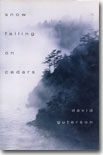 |
Guterson, David. Snow Falling on Cedars.
This beautifully written novel takes place on an island in the straits north of Puget Sound in the 1950’s. Memories of internment camps and World War II, fuel the accusation of a Japanese-American fisherman suspected of killing a former high school classmate. Ishmael Chambers, the local newspaper’s only reporter, covers the trial, and in doing so, provides the reader with a love story, murder mystery, courtroom drama, and the painful history after the war and internment. The writing, with intertwining themes and sensory descriptions, is moving.
|
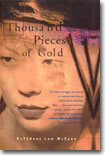 |
McCunn, Ruthanne Lum. Thousand Pieces of Gold.
This is the biography of a young girl who grew up in China in the 1870s. She was sold by her father during the famine, transported to the United States on a slave ship, auctioned off, and eventually traded in a gambling loss. She not only survives, but thrives in the West with a spirit of hope, inventiveness, self-reliance, and hard work.
|
 |
Okada, John. No-No Boy.
Ichiro, the main character, is rejected as Japanese and American after his refusal to fight in World War II and his subsequent imprisonment. It is painful to read of his struggle with his family, former friends, and strangers. This is a powerful book about Japanese-American life post-World War II.
|
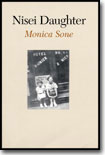 |
Sone, Monica. Nisei Daughter.
Monica Sone, the author, spent her childhood in Seattle prior to World War II. She describes herself as a chameleon, with parts of her life firmly in Japanese culture, and others very much American. During her internment, she is furious at the indignity of living in such barbaric conditions, and the loss of her civil rights and her family’s property. Released to the Midwest, she is finally able to bring together the cultures that make up her heritage. Sone’s description of the conflict between Nisei and their Issei parents is poignantly portrayed.
|
| Young Adult |
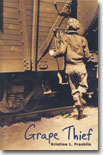 |
Franklin, Kristine L. Grape Thief.
Slava Petrovich, who is nicknamed "Cuss" because he can swear in fourteen languages, lives in the coal-mining town of Roslyn during 1925. Cuss and his friends Skinny, an Italian, and Perks, who is black, have an annual ritual of stealing grapes from a train when it arrives from California. Cuss also struggles with his desire to stay in school and the need to work to help support his financially strapped family. This book has a strong sense of multiple ethnicities in a small Washington town. It is strong historical fiction that melds prejudice, violence, poverty, friendship and sacrifice. (Grades 5-9)
|
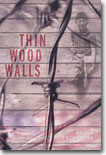 |
Patneaude, David. Thin Wood Walls.
Joe Hanada leads a happy childhood in White River Valley prior to the bombing of Pearl Harbor. His father is led away by the FBI, and Joe and the rest of the family are eventually taken to Tule Lake Relocation Camp. Joe finds comfort in the continued loyalty of his Caucasian best friend and in his journal. This book relays the experience of a Japanese-American child torn from his happy existence by the fallout of war. (Grades 6-10)
|
| Children |
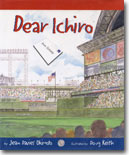 |
Okimoto, Jean Davies. Dear Ichiro. Illustrated by Doug Keith.
While on an outing to see the Mariners, young Henry tells his grandfather about his fight with his best friend. As they cheer on baseball players of Japanese origin, his Grandpa Charlie tells Henry about World War II, and putting the war behind them to live in peace. This gentle, well-illustrated picture book relays a powerful message about how enemies can become friends again.
|